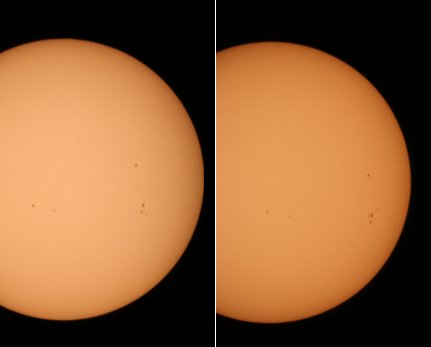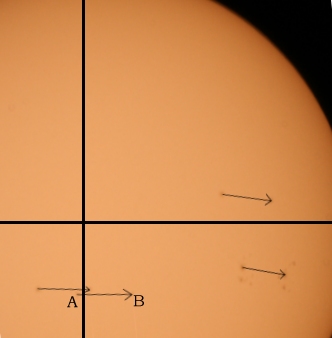 |
| News | Equipment | Observatory | Astrophotography | Projects | About me |
Determining the solar siderial rotation periodThe sun is a rotating ball of plasma. As the sun is not a solid body, the plasma rotates at different speeds depending on the latitude. The aim of this project is to determine these rotation speeds as function of the latitude. We approach this problem by studying the movement of sunspots in white light. Using digital photography we can determine quite accurately the rotations speeds. For this to work we need to study the movement of sunspots at different latitudes. Most sunspots appear around the equator of the sun, but more nothern or southern spots are likely to appear during the "active" period of the 11-year solar cycle. Currently (2005) the sun is near her most in-active point in this period. Hence, this project will take time.First data set: at 26.7 degrees latitude, the siderial rotation period is 27.5 daysThese two images were acquired on two consecutive days in july 2005. It gives us our first datapoints.

 We rotated the image slightly such that some arrows are horizontal. This makes it more evident that not all arrows are parallel 
Hence, A full rotation would be 360 degrees, therefore it will take the sun
to make a full siderial rotation. Note that this simple calculation depends heavily on the fact that point A is on the vertical equator, so we were lucky having a sunspot on that exact location. The calculation of tilt and lattitude are similar, except we measure pixels vertically. |